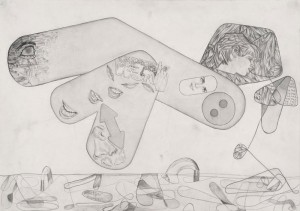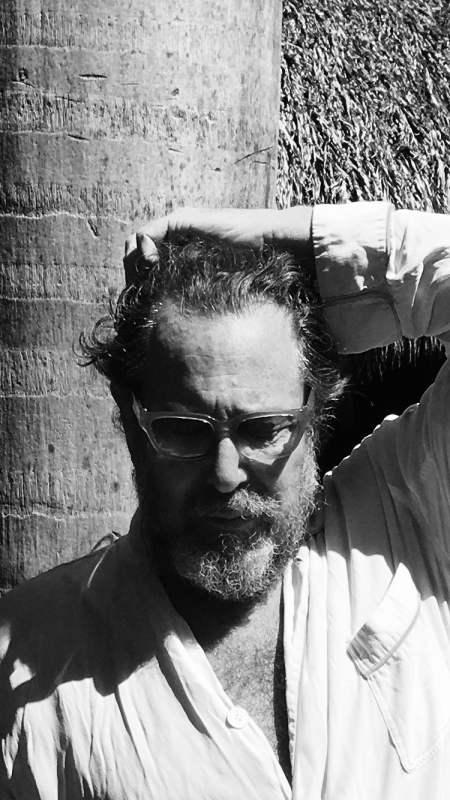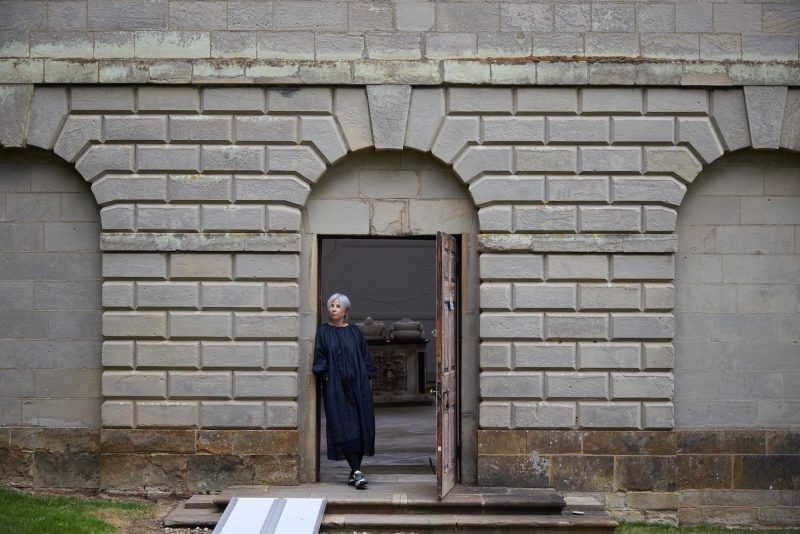
Having been asked to refamiliarize with Herbert Marcuse’s famous mid-sixties polemic, One-Dimensional Man (1964), I’ve been pleasantly surprised as to what a productive book it is. Much of this surprise was derived from becoming reacquainted with the unusual texture and generosity of Marcuse’s philosophy. And whilst this acclaimed book is the product of its location in time, it charts a seemingly eccentric course between various poles of thought that make it an altogether fascinating and unconventional work. In retrospect, he seems to stand at some distance to the other Frankfurt School social theorists and it is easy to determine why he engendered a cross-generational appeal to his students, including the radical Angela Davis, on the Columbia campus in San Diego where he taught during the turbulent Sixties – a campus that was heavily involved in scientific research for the military industrial complex during the abhorrent Vietnam War.
The seeming novelty of One-Dimensional Man is that its sociological import is based on a curious understanding of technological rationality and instrumentalization within affluent Western societies, which Marcuse contrasts with the bureaucratic rationality of the Soviet mega-machine. Here he offers a dual-critique of the ever-increasing totalization of the capitalist space and the faltering teleology of Soviet communism (which we can now better characterise as state capitalism/war communism). Shortly after One-Dimensional Man was published this bi-polar stasis was made manifest on either side of the Iron Curtain in the student/worker uprisings of both Paris and Prague in 1968.
The curious complexion of Marcuse’s thought comes to the fore in this work: a thought-world composed of Hegelian Reason, a profound understanding of Heidegger’s conception of technology and tool-being, which is then put to work alongside Marx’s ‘Fragments on Machines’ from Grundrisse. Broadly, Marcuse fits into the unusual category of being a ‘communist individualist’ and whilst he is concerned with labour, social alienation, technology and their relations, he has an idiosyncratic reading of Marxian theory that is both radically individualist and humanist. Althusser admonished Marcuse for this ‘radical individualism’, which in Marxist terms is putative paradox, due to the transindividual/collective emphasis of Marxist thought. However, Marcuse’s social entity appears to be closer to Hegel and Feuerbach’s, a curious admixture of subjective empiricism and sensuous idealist human essence.
Marcuse also draws heavily on Gilbert Simondon’s understanding of technical objects, an insight that gets to the heart of where social alienation emanates; that is to say from the ‘invisible’ hidden abode of production. This conception of the technical ensemble is veridical to Marx’s identification of the factory as the source of the mystification of production. Marcuse borrows Simondon’s description of social alienation to support his idea of totalitarian rationality, a variety of technofascism or ‘autocratic philosophy of technics’ and it is Simondon who is also a crucial influence on the machinic-hyletic constructivism of Delueze and Guattari. Accordingly, Marcuse foreshadows Anti-Oedipus, alongside Wilhelm Reich, as perhaps one of the first thinkers of ‘libidinal economy’, merging Freudianism and Marxism in Eros and Civilization, by connecting libido to labour-power.
The most exciting moment of One-Dimensional Man comes in the analysis of the composition of technological rationality towards the end of the book, where Marcuse demonstrates an admirable grasp of Heidegger’s writing on technology – in which technical objects are simultaneously present-at-hand (Vorhandenheit) or ready-to-hand (Zuhandenheit) – as well as alluding to the liberatory paradigm of scientific enlightenment. Here he clearly delimits the pure reason of science from the technological instrumentalization of science via the ‘applied’ sciences, which create an irrational horizon for the positivist philosophy of science of his time. It is this circumscribed horizon that subordinates the reason of science to the irrationality of the capitalist mode of production (an irrational rationale, so to speak). This very instrumentalization of science – present in the capitalist implementation of machinery and all too evident in the US military industrial complex – transforms the web of reason into the web of domination. This vector of domination has miserable consequences for the subject, even within the most affluent societies, rendering reason opaque and mysterious. Marcuse then seeks to use the possibility of technological liberation against those self-same processes of domination, just as we are witnessing currently with the mobilisation of new technologies in the upheaval in Iran.
On a minor, but nonetheless elucidating biographical note, Marcuse was a keen collector of hippopotamus figurines, which apparently lined his office at Columbia. In this we can detect a certain creative playfulness in his identification with what for him was ‘an impossible animal’, an interspecies anomaly that traverses both land and water. Isn’t the best that we can say of Marcuse’s thought is that it is a curiously uncategorizable amphibian that fascinates us nonetheless? Unsurprisingly, Marcuse turned to aesthetics to find a trace of negativity capable of dislodging the positivist capitalist paradigm of his day, an urgent task, as capitalism is so adept at endlessly integrating its opposition. In aesthetics, particularly those of the avant-garde, Marcuse finds the possibility of an emerging Lebenswelt; a new mode of meta-political power and subjective experience. For him, aesthetics is a potentially liberating techne when incorporated into everyday sensation.
All of which dovetails neatly with the artistic presentations of the exhibition ‘One-Dimensional Man’ featuring the varied works of Edwin Burdis, Anthony Green and Barry MacGregor Johnston. In all three artists we can detect some of the themes that arise in Marcuse’s book. If we take art to be a form of techne of the self, the development of an artistic subjectivity, it is then it is easy identify art’s important political dimension and usefulness as an emancipatory paradigm.
In Edwin Burdiss’ performance, an almost Tati-esque entanglement, we encounter a dramatization of Heidegger’s tool analysis. In his restaging of an earlier performance the very technical objects designed to facilitate him end up ensnaring him. The liberatory and novel potential of the mechanical is transformed into a comedic blockage or obstacle; something that instills pathos in all of us, a performance of the problematic relationship we have with technical objects. Burdis can only possibly use the microphone when it recedes from his attention, highlighting how ‘…the object is torn asunder from itself in two directions’. Put more simply, when he attempts to use the microphone, the microphone withdraws from visibility; as soon he concentrates on the objective microphone as a microphone, it is made visible again, and losing its functionality. The two dimensions of the tool are then implicitly opposed – one face is present whilst the other withdraws from us. This philosophical conundrum in which the instrument becomes an obstructive object is an unlikely, yet remarkably productive riddle for Burdis – a problematic from which he derives an inventive physical comedy.
Anthony Green has adopted an energetic and processual mode of production, to engender an art that overflows to ordinary conceptual and discursive values. Here it is as if the diagram has become an auto-generational machine that manifests itself as material excess. We are not merely presented with the informational art-object, but the procedural act of construction is implicitly visible to us. As a result, the work teeters improbably like an array of impossible configurations, fragments and patterns of unthinkable blocks of affect and sensation. It is manifested not as a finite act of artistic production that ends with a mere commodity, but the infinite constructivism of a novel artistic subjectivity, which becomes inseparable from the work itself. The work is then articulated through the liberation of previously unimaginable of potentialities, in which all the vectors of sensation collide to overwhelm us, rupturing our hic et nunc. Within Green’s work we see the very mode of production revealed, no longer mystified as it is within the opaque web of instrumental technology of Marcuse’s critique, but laid-bare so that we can see the inner workings and excrescences of his non-alienating artistic abstract-machine.
In an almost contradictory manner to this productive techne Barry MacGregor Johnston wishes to exploit and exhalt the redundancy of objects and subordinate them to his artistic will; in his words he wants to ‘fire’ them. This maneuver liberates the object, stripped of its instrumentality, allowing him to reemploy them for his own deviant purposes. By destroying their worldly function and assigning them a new rationale objects become present-at-hand and visible to us – in the manner of broken tools, which become obtrusive to us once their functionality is destroyed, veritable corrupted junk-piles that strangely become for-us again. This is a radical reconfiguration and weaponization our object-worlds that Marcuse might approve of, the establishment of a ‘horizonal fringe’ that might point to a liberatory reordering of the world of banal instrumental usage under the auspices of art; an act of affirmative, destructive creation.
And does this not confirm to Marcuse’s idea of aesthetics as a ‘lightning-flash’, an unavoidable facet of being itself and para-technology that remakes the world in a communist sense, in order to rip it up and start over? It is an injunction our break our materialist fetters through performative acts of material, poetic and improvisational enquiry and begin to build an existing utopia in the present, beyond the system that produces merely for the sake of production. Why should we wait? We can do it better.
Andrew Osborne, June 2009
18 July to 15 August 2009 International Project Space School of Art Bournville Birmingham Institute of Art & Design Maple Road, Birmingham B30 2AA Wednesday 12 to 7pm, Thursday to Saturday 12 to 5pm Admission is free https://en.wikipedia.org/wiki/Bournville_Centre_for_Visual_Arts
One-Dimensional Man: The Possibility of Triumph Over the Disaster of Capitalism.







